Planning a 2025 New York escape doesn’t have to center on Manhattan. Beyond the city lies a network of art spaces, mountain trails, and historic towns that reveal the state’s full character. This five-day route travels from the Hudson Valley to the Adirondacks, pairing culture with nature across ten destinations. Each stop – from world-class museums to quiet waterfalls – shows how New York’s landscapes and history connect, offering travelers a deeper and more balanced journey.
1. Day 1: Dia Beacon (Beacon)
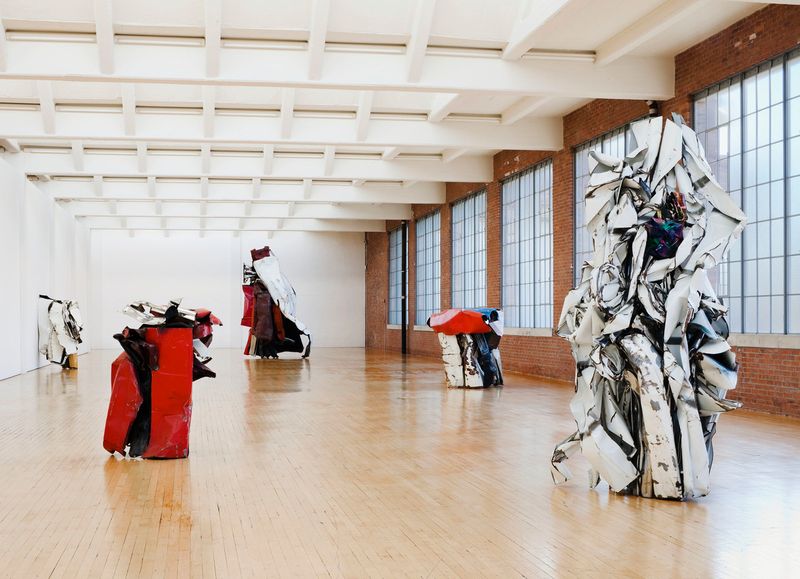
Dia Beacon stands along the Hudson River inside a converted 1929 Nabisco box-printing factory. Operated by the Dia Art Foundation, it is one of the leading spaces in the U.S. for post-1960s art. Works by Richard Serra, Louise Bourgeois, Dan Flavin, and other major artists occupy vast galleries naturally lit through industrial windows.
The museum’s design encourages slow viewing and minimal crowding, while staff-led tours explain the site’s shift from industry to culture. Exhibitions are long-term installations that remain on view for years, allowing meaningful revisits. Outdoors, landscaped grounds and nearby river trails provide calm breaks between galleries. Beacon’s Main Street – five minutes away by foot – adds design shops and cafés.
Trains from Grand Central Terminal reach Beacon in about 80 minutes, making Dia Beacon an accessible and essential first stop for exploring the Hudson Valley’s creative revival.
2. Day 1: Walkway Over the Hudson (Poughkeepsie)
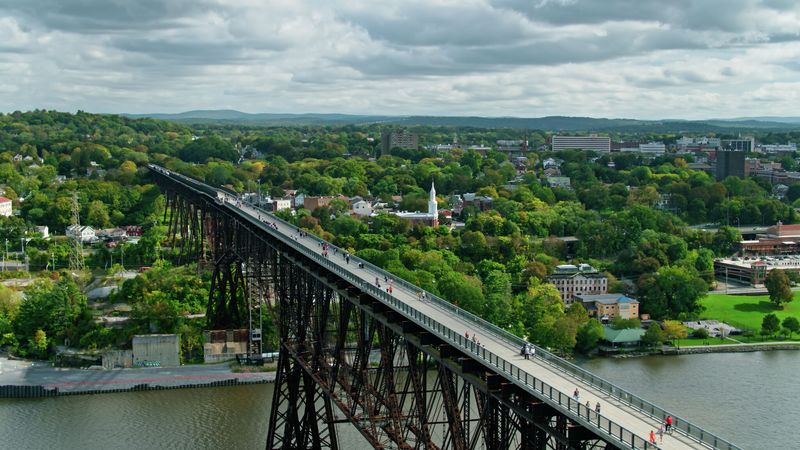
Walkway Over the Hudson State Historic Park stretches 1.28 miles across the Hudson River, linking Poughkeepsie and Highland. Rising 212 feet above the water, it is the world’s longest elevated pedestrian bridge and one of the state’s most photographed outdoor attractions.
Once a 19th-century rail line, it reopened in 2009 as a public walkway. Visitors can walk, cycle, or pause at lookouts with interpretive signs explaining the bridge’s engineering and regional history. Elevators and ramps on both sides ensure accessibility, and seasonal guided walks and community events are posted through the park’s official calendar.
The walkway is open year-round, free of charge, and maintained by New York State Parks and the nonprofit Walkway organization. At sunrise or sunset, the combination of Hudson River views and Catskill silhouettes delivers some of the best panoramas in the Mid-Hudson Valley.
3. Day 2: Kaaterskill Falls (Hunter)
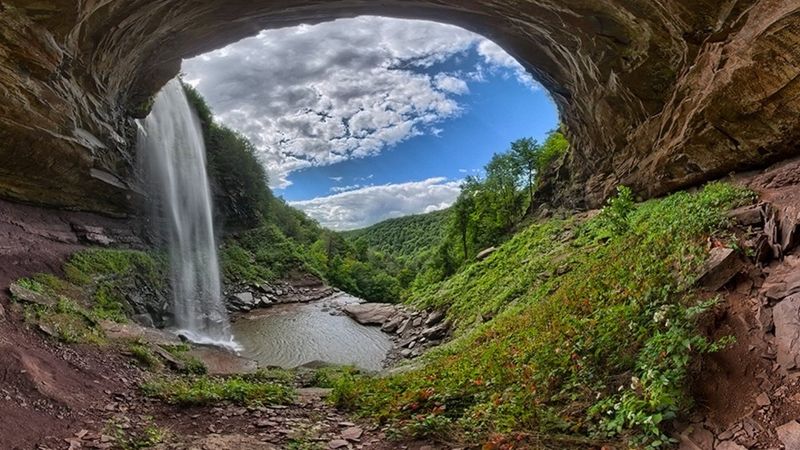
Kaaterskill Falls, located in the Catskill Forest Preserve near Hunter, drops roughly 260 feet in two stages, making it one of New York’s tallest waterfalls. The falls inspired 19th-century painters of the Hudson River School and remain a cornerstone of Catskill hiking.
The trailhead begins along Route 23A, with a maintained path leading to both upper and lower viewing platforms secured with safety railings. New York State Department of Environmental Conservation improvements completed in recent years added signage, stone steps, and barriers to prevent erosion. The route is moderate and open most of the year, though conditions vary with weather.
Rangers and volunteer stewards help protect fragile vegetation along the gorge. Visitors find restrooms and picnic spots at Laurel House Road parking area. Spring and autumn are peak seasons when flow and foliage reach their most dramatic balance.
4. Day 2: Hunter Mountain Scenic Skyride (Hunter)
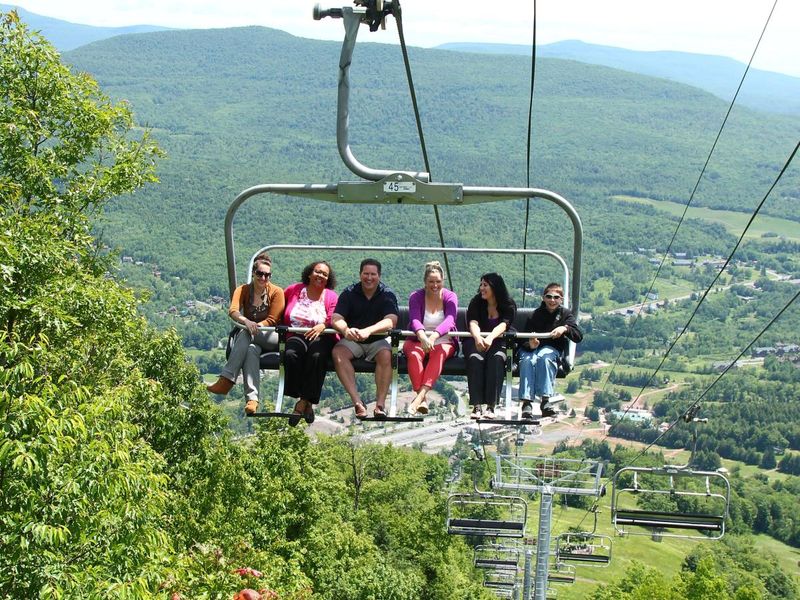
The Hunter Mountain Scenic Skyride lifts passengers to the 3,200-foot summit of Hunter Mountain for panoramic views across the Catskills. Operated by Vail Resorts, the six-passenger chair operates from late May through mid-October, depending on weather.
The 11-minute ride offers photo stops and access to summit walking trails, where visibility can extend to the Berkshires and Hudson Valley on clear days. At the base area, the resort runs mountain-biking routes, hiking loops, and a canopy zipline, making it active through all seasons. Informational signs interpret local geology and wildlife, while visitor facilities include restrooms, a café, and picnic zones.
Tickets are sold online or on-site, with updated rates posted each season. The Skyride provides an easy, scenic way to enjoy Catskill mountain vistas without strenuous hiking and remains one of the region’s most consistent summer attractions.
5. Day 3: New York State Capitol (Albany)

The New York State Capitol crowns downtown Albany with its mix of Romanesque Revival and French Renaissance styles. Construction began in 1867 and finished in 1899 after multiple architects – including Henry Hobson Richardson – left their mark.
Still housing the governor’s offices and legislature, it functions both as a civic building and public monument. Free guided tours led by the New York State Office of General Services explain its Million Dollar Staircase, carved stonework, and ongoing restoration projects. Visitors pass through security and timed entry; reservations can be made online or at the lobby desk.
The Capitol anchors the Empire State Plaza, a cultural complex linking museums, fountains, and modern sculpture. Preservation work on interior murals and exterior masonry continues into 2025, ensuring the site remains structurally sound. Together, the Capitol and Plaza capture New York’s architectural evolution and political history in one walkable area.
6. Day 3: New York State Museum (Albany)
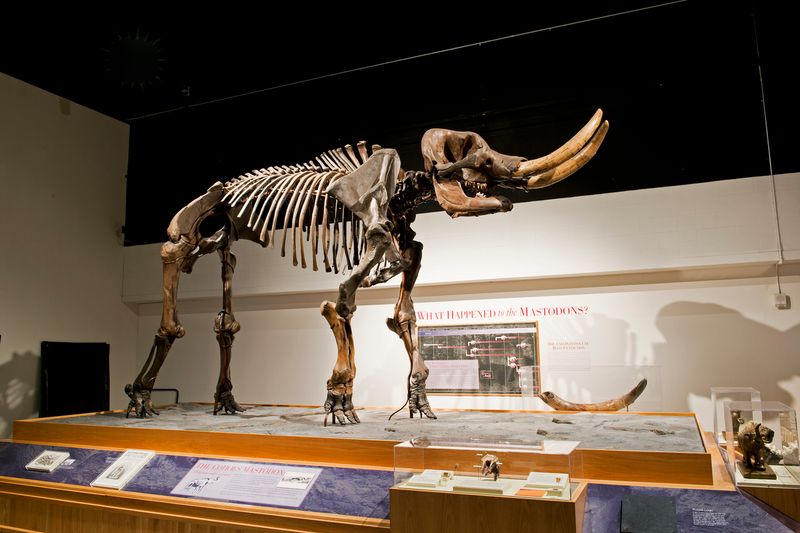
The New York State Museum, situated at the south end of Empire State Plaza, is the nation’s oldest and largest state museum. It documents New York’s natural, cultural, and social history through permanent and rotating exhibits.
Displays cover Adirondack wildlife, Haudenosaunee heritage, the Erie Canal, and the events of September 11, 2001. Interactive sections allow visitors to study fossils, minerals, and historical artifacts up close. The museum doubles as a research center supported by the State Education Department. Admission remains free, with donations funding education and preservation programs.
The museum store features regionally made crafts, and a café provides light meals. Visitors can reach it via the underground concourse linking to the Capitol and other state buildings. In 2025, exhibit updates continue, reinforcing the institution’s reputation as a leading hub for statewide learning and cultural stewardship.
7. Day 4: Corning Museum of Glass (Corning)
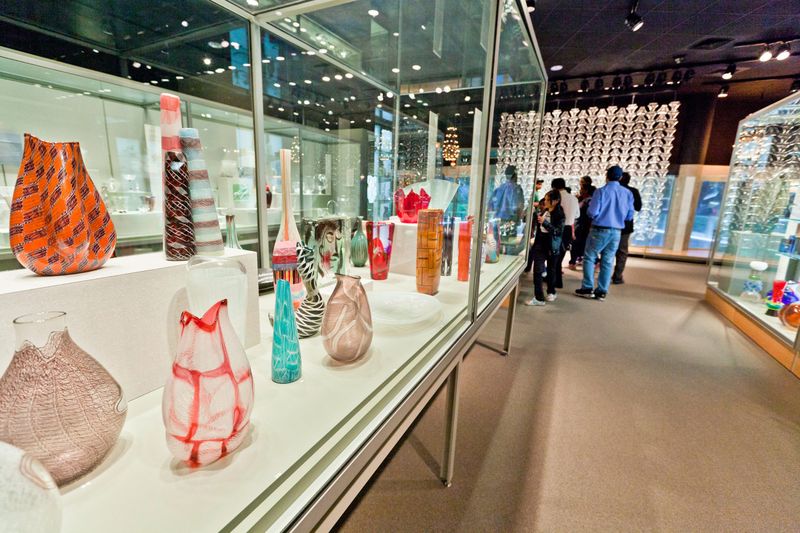
The Corning Museum of Glass interprets 3,500 years of glass art and science through one of the world’s largest collections – over 50,000 objects. Established in 1951 by Corning Incorporated, the museum blends design, technology, and heritage in permanent galleries and live glassblowing demonstrations.
Visitors watch artisans shape molten glass while guides explain physics and craft methods. Hands-on studios let guests create small pieces under professional supervision. The Rakow Research Library, housed on-site, remains a global reference archive for glass study and conservation.
The complex operates year-round with family programs, sustainability exhibits, and rotating shows on modern materials and optics. Situated just off Interstate 86, it is minutes from Corning’s historic Market Street district of 19th-century architecture. The museum continues to rank among New York State’s most visited cultural attractions for art lovers, scientists, and families alike.
8. Day 4: Taughannock Falls State Park (Trumansburg)

Taughannock Falls State Park, ten miles north of Ithaca, features a 215-foot plunge waterfall – one of the tallest single drops east of the Rockies. Trails along the gorge and rim provide multiple viewpoints with clear safety signage and benches.
A visitor center explains the area’s glacial geology and local wildlife. In summer, the park’s Cayuga Lake section includes a lifeguarded beach, marina, and boat launch. Restrooms, picnic shelters, and campgrounds are maintained seasonally. Winter visitors can snowshoe or cross-country ski on marked paths.
The overlook, open all year, gives the park’s most famous view: the falls framed by shale cliffs rising higher than Niagara’s. Managed by New York State Parks, Taughannock remains a model of accessibility and conservation within the Finger Lakes region, balancing recreation with protection of its fragile gorge ecosystem.
9. Day 5: Lake Placid Olympic Museum (Lake Placid)

The Lake Placid Olympic Museum chronicles the 1932 and 1980 Winter Olympic Games held in this Adirondack village. Following a major renovation completed in December 2022, the museum reopened with expanded galleries, digital installations, and hundreds of original artifacts.
Highlights include medals, uniforms, equipment, and footage from the “Miracle on Ice.” Located inside the Olympic Center, it connects to active skating rinks where athletes still train. Exhibits outline how Lake Placid twice hosted the Games through community effort and mountain engineering.
Nearby, visitors can tour the Olympic Jumping Complex and Mount Van Hoevenberg venues, both modernized for ongoing international events. Together, these sites illustrate the region’s lasting role in Olympic history. The museum operates year-round with educational programs linking sport, history, and regional identity across the Adirondacks.
10. Day 5: The Wild Center (Tupper Lake)
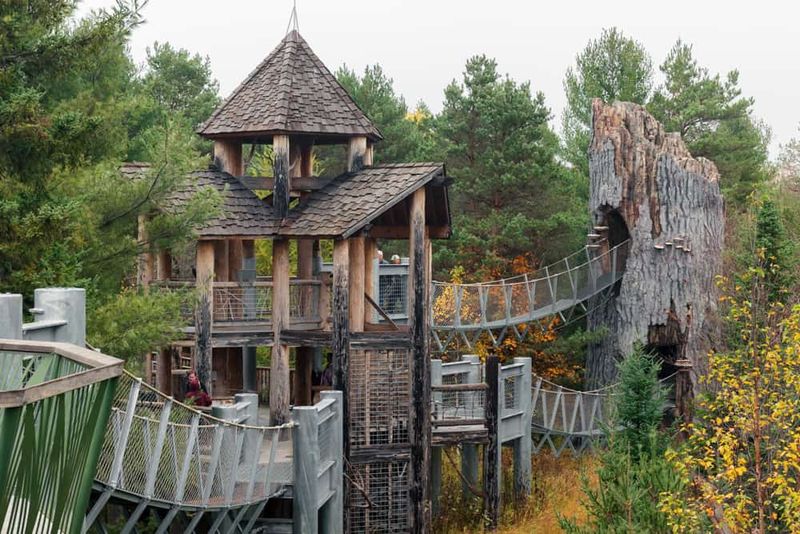
The Wild Center in Tupper Lake serves as a living museum of the Adirondack ecosystem. Its main exhibits feature live animals, interactive science displays, and films on local environments. The outdoor Wild Walk – a raised network of bridges and platforms – leads visitors through treetop habitats with nest-shaped lookouts and a giant spider-web platform for safe climbing.
Trails and canoe rentals extend exploration to nearby ponds. Educational programs emphasize sustainable forestry, climate science, and regional conservation. The center partners with schools and research groups to track biodiversity year-round. Exhibits rotate seasonally to match natural changes in the park’s six-million-acre landscape.
The Wild Center remains open through all seasons and continues in 2025 to represent New York’s investment in accessible, science-based environmental education within its protected Adirondack wilderness.
Dear Reader: This page may contain affiliate links which may earn a commission if you click through and make a purchase. Our independent journalism is not influenced by any advertiser or commercial initiative unless it is clearly marked as sponsored content. As travel products change, please be sure to reconfirm all details and stay up to date with current events to ensure a safe and successful trip.